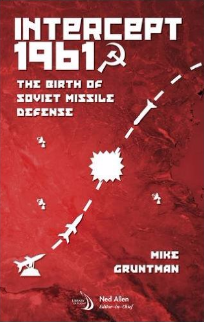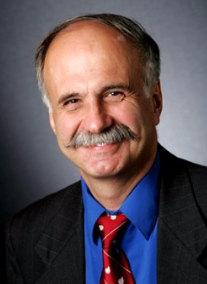Feb 18: Intercept 1961 – the Birth of Soviet Missile Defense
Buenaventura Aerospace and Electronic Systems Society
Intercept 1961 – The Birth of Soviet Missile Defense
Prof. Mike Gruntman PhD
Thursday February 18, 2016 at 6:30 pm
California Lutheran University, Thousand Oaks, CA
Meetings are free and open to the public
 On March 4, 1961, a Soviet guided missile performed the first nonnuclear intercept of an intermediate range ballistic missile (SS-4, R-12) at the Saryshagan test site in the Kazakhstan desert when it destroyed an approaching warhead. This spectacular and most consequential achievement followed earlier intercepts by the United States Army of several shorter range missiles at White Sands.
On March 4, 1961, a Soviet guided missile performed the first nonnuclear intercept of an intermediate range ballistic missile (SS-4, R-12) at the Saryshagan test site in the Kazakhstan desert when it destroyed an approaching warhead. This spectacular and most consequential achievement followed earlier intercepts by the United States Army of several shorter range missiles at White Sands.
The new field led to the emergence of monitoring space objects in orbit, ballistic missile early warning, and antisatellite weapons. The first operational Soviet missile defense system A-35 was deployed in 1970s to protect Moscow; its successor remaining active today.
Dr. Mike Gruntman will introduce us to the events that led to the first nonnuclear intercepts of long-range ballistic missile warheads in 1961 and will describe the technical characteristics of early air and missile defense systems. We will learn about how the Soviet Missile Defense program came to exist and first attacks it intercepted.
Information regarding missile defense systems is especially relevant today as the United States and other countries continue facing the eternal “protect-or-avenge” dilemma when balancing retaliatory offensive capabilities against defensive protection. In an age of unstable governments, spreading weapons of mass destruction, and radical ideologies and terrorism, this historical background is critical for informed policy formulation, threat evaluation, defense planning, and counteracting the proliferation of weapons and sensitive technologies.
 Dr. Mike Gruntman is professor of astronautics at the University of Southern California (USC). His life journey took him from a child growing on the Tyuratam (Baikonur) missile and space launch base during the late 1950s and early 1960s to an accomplished space physicist to the founder of a major space engineering education program in the heart of the U.S. space industry. Mike served the founding chairman of this nationally recognized astronautical engineering department at USC. He teaches courses in space systems and rocket propulsion at the university as well as short courses (AIAA and ATI) for government and industry.
Dr. Mike Gruntman is professor of astronautics at the University of Southern California (USC). His life journey took him from a child growing on the Tyuratam (Baikonur) missile and space launch base during the late 1950s and early 1960s to an accomplished space physicist to the founder of a major space engineering education program in the heart of the U.S. space industry. Mike served the founding chairman of this nationally recognized astronautical engineering department at USC. He teaches courses in space systems and rocket propulsion at the university as well as short courses (AIAA and ATI) for government and industry.
Research interests of Dr. Gruntman include astronautics; space physics and space and laboratory instrumentation and sensors; space mission and satellite design; and rocketry and spacecraft propulsion. He is actively involved in R&D programs in space science, technology, and applications. Mike received three NASA group achievement awards. He served on the editorial board of the Review of Scientific Instruments from 2001-2003.
Dr. Gruntman has authored and co-authored nearly 300 publications, including more than 90 journal articles and book chapters and more than 50 conference proceedings papers. Mike has written four books. His “Blazing the Trail: The Early History of Spacecraft and Rocketry” (AIAA, 2004) won the International Academy of Astronautics’ award.
Location: California Lutheran University
Pizza/networking starts at 6:30 pm
Talk starts at 7:00 pm
Our sponsors:
California Lutheran University
IEEE Buenaventura Section
RSVP: get your ticket here (free event)
Directions from Ventura:
Take the Ventura Freeway 101 South.
Take Lynn Road Exit, turn left, drive 2.9 miles.
Lynn Road turns into Olsen Road, drive .9 miles.
Turn right onto Mountclef Boulevard – the University is on the right
Directions from Los Angeles:
Take the Ventura Freeway 101 North.
Take Lynn Road Exit, turn right, drive 2.9 miles.
Lynn Road turns into Olsen Road, drive .9 miles.
Turn right onto Mountclef Boulevard – the University is on the right.

